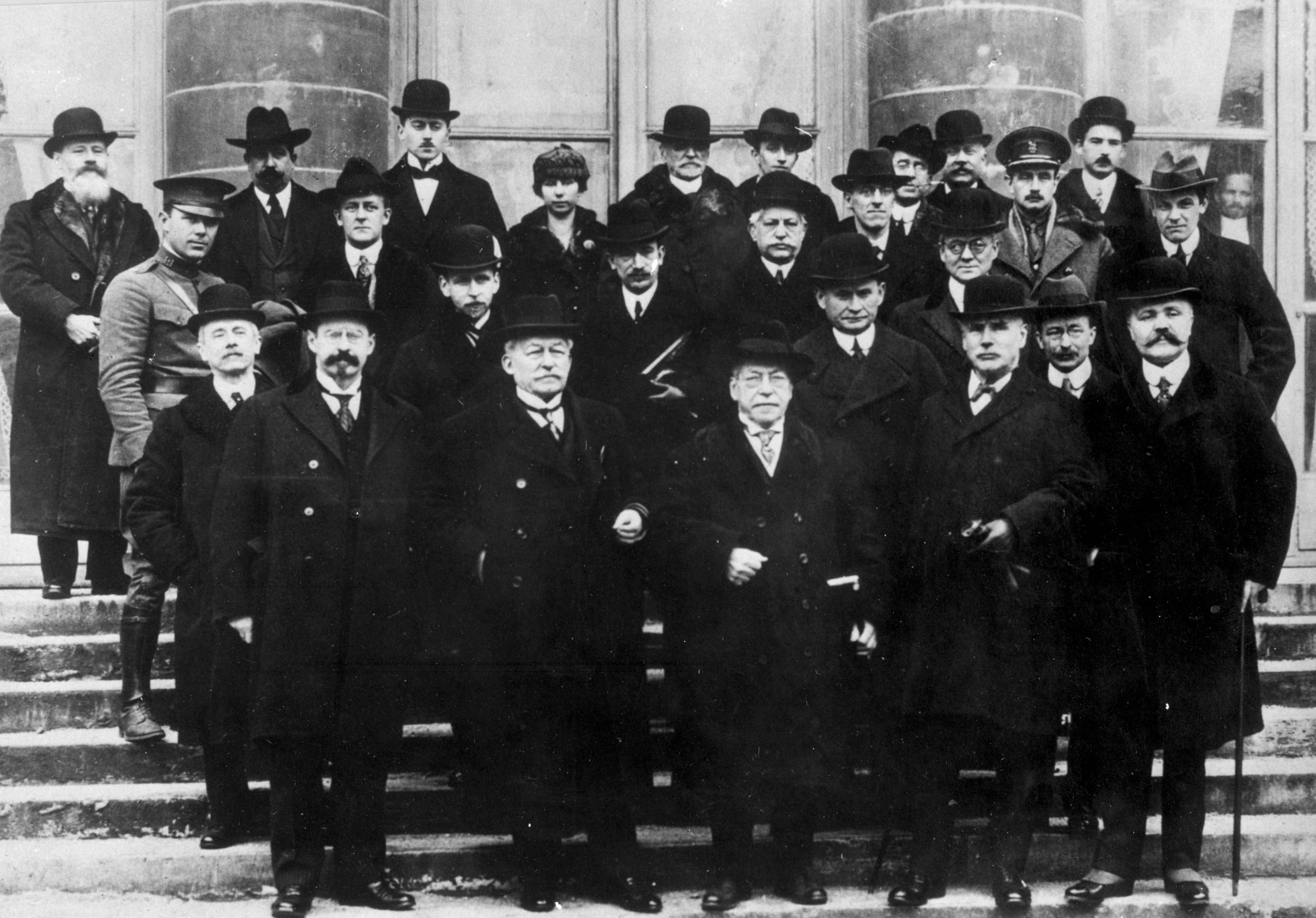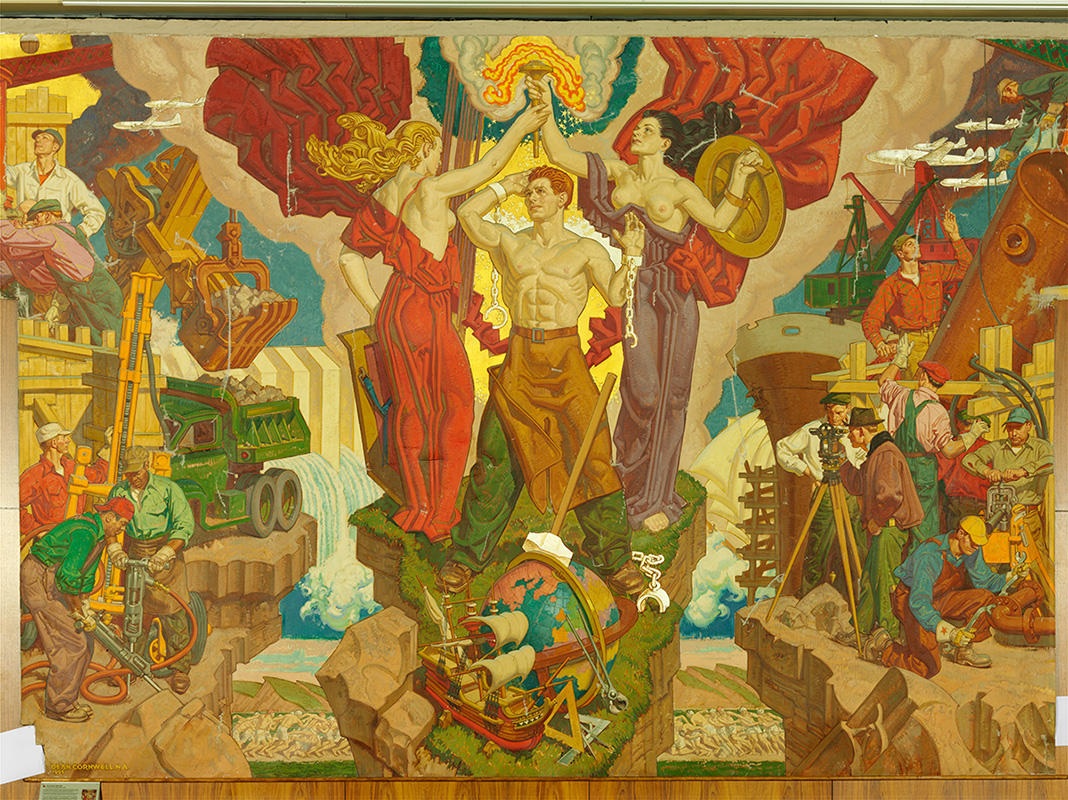
Has the global labour organisation advanced workers’ rights?

As the Geneva-based International Labour Organization (ILO) marks its 100th birthday, experts reflect on the importance of the unique United Nations agency in today’s globalised world.
Back in 1919, the ILO’s unique tripartite structureExternal link, still present today, brought together governments, workers and employers with ambitious aims: to create a framework of worker rights, protection against exploitation and slavery, and to ensure the freedom to form unions.
One hundred years onExternal link, in a world of complex supply chains, insecure jobs, increasing global deregulation of the labour market and millions of people stuck in forced labour in factories, farms and fishing boats, is the ILO still relevant?
For Sandrine KottExternal link, professor of European contemporary history at the University of Geneva, the organisation still plays an important lead role defending social justice in the world of work.
“But its weakness is that this discourse is not dominant right now, especially since the mid-1970s. It’s an organisation of regulation and not one of deregulation,” she said.
“The ILO does what it can in a world that is clearly not very favourable to it. One day it may have more influence, but right now it cannot change the world.”
Over the past 100 years, the ILO has adopted almost 200 international labour standards on issues ranging from the eight-hour day to domestic workers. Beyond policy, its work focuses on technical cooperation, research and compiling reliable data and statistics on labour and social questions.

Yet since its birth, the ILO has been criticized for being slow, bureaucratic, and lacking teeth and the capacity to follow through on the ground.
“There’s an issue in terms of application and a contradiction with certain governments voting for a convention in Geneva and then not putting that into practice back home,” said Philip Jennings, former general secretary of UNI Global Union, the global trade union for the services sector.External link
He added that the business community was often ignorant of international labour standards and the scope of the ILO’s work such as efforts to improve supply chains.
“But the ILO is the only part of the UN where you have a tripartite structure and a supervisory network where we can bring governments to account and have a dialogue with governments to improve their behaviour,” he said.

Swiss ambassador Jean-Jacques Elmiger admits the ILO is not perfect, but insists the agency promotes fundamental values and gets results.
“It is not just the regulatory role which is central, but what the ILO can do with these labour standards. Implementation is very important, and we have good examples where ILO standards played a central role, like with the issue of forced labour in MyanmarExternal link.”
In 2000, the ILO initiated a major campaign to combat forced labour in the southeast Asian state via official complaints to the government and trade union action; other UN agencies joined later. In 2012, the ILO lifted punitive restrictions on Myanmar in response to a new law on trade unions and a joint action plan to end forced labour by 2015.
Currently led by British Director General Guy Ryder, the organisation continues to focus on social justice in a world transformed by globalization.
The ILO has championed “decent workExternal link”, which has become a strategic goal since the 2008 global financial and economic crisis and integrated into one of the 17 UN Sustainable Development Goals (SDGs).External link
Daniel MaulExternal link, associate professor of international contemporary history at Oslo University, said the concept of decent work was occasionally criticised as ‘vague’ but it had been a great success for the ILO.
“As a strategy it has got the ILO a lot of attention and it has strengthened its standing in the international community, opening doors for the organisation, for example to the G20 summits,” he said.
Elmiger said it was imperative for the ILO to continue decent work as a long-term political objective. But he said it faced a number of important ongoing challenges, especially relating to occupational safety and health.
“Lots of countries have good legislation to protect workers but the implementation is not optimal, and the ILO needs to play a role here,” said the Swiss ambassador. “It needs to get more involved in the real implementation of legislation, not just monitoring the situation and publishing recommendations to governments but more technical cooperation on the ground with the local authorities and social partners.”
To mark the official start of the centenary celebrations on Tuesday, the ILO is publishing a report on the future of workExternal link External linkdrawn up after a 15-month consultation that presents a “human-centred” agenda for the coming years based on investing in people’s capabilities, institutions of work and decent and sustainable work.
The report has ten recommendations including more investment in lifelong learning, a guaranteed social protection and a universal labour guarantee that enshrines an adequate living wage, maximum limits on working hours, and protection of safety and health at work.

More
Inauguration of ILO headquarters in 1926
Born out of the ashes of the First World War in 1919, the ILO was established by the Treaty of Versailles as an affiliated agency of the League of Nations at a time of great conflict, revolution and worker exploitation. The idea behind it – radical for the time – is best summed up in the preamble of its ConstitutionExternal link: “Universal and lasting peace can be established only if it is based upon social justice”.
Since moving to Geneva in 1920, the ILO has left its physical mark on the city. Initially, it occupied what would later become the headquarters of the International Committee of the Red Cross (ICRCExternal link). In 1926 the ILO’s own HQ was built by the lake. The building was later enlarged and transformed, and renamed the William Rappard CentreExternal link, and is today the headquarters of the World Trade Organization (WTO).
In 1940, the ILO’s headquarters was temporarily moved to Montreal, Canada, for reasons of safety due to the Second World War. Back in Geneva, the agency quickly outgrew its lakeside home. In 1974, it moved northwards into its current home External link– a 11-floor monumental structure, which at the time was the largest administrative building in Switzerland.

In compliance with the JTI standards
More: SWI swissinfo.ch certified by the Journalism Trust Initiative

















![The four-metre-long painting "Sonntag der Bergbauern" [Sunday of the Mountain Farmers, 1923-24/26] had to be removed by a crane from the German Chancellery in Berlin for the exhibition in Bern.](https://www.swissinfo.ch/content/wp-content/uploads/sites/13/2025/12/01_Pressebild_KirchnerxKirchner.jpg?ver=8f77363a)












You can find an overview of ongoing debates with our journalists here . Please join us!
If you want to start a conversation about a topic raised in this article or want to report factual errors, email us at english@swissinfo.ch.